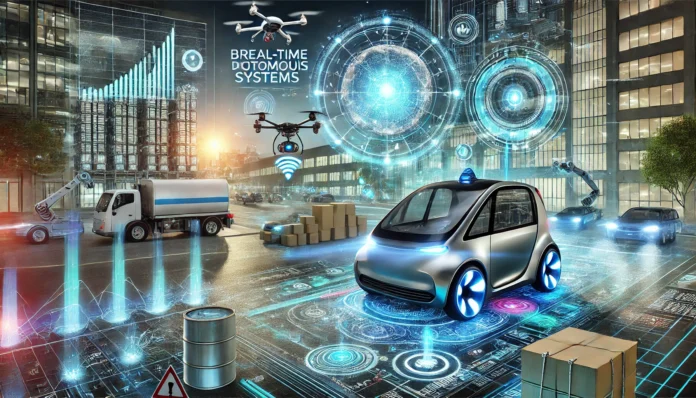Autonomous systems are reshaping industries by leveraging artificial intelligence (AI) to perform complex tasks without human intervention. From self-driving cars to AI-powered drones, these technologies promise to revolutionize transportation, agriculture, disaster response, and more. However, their rapid advancement also raises ethical, regulatory, and societal challenges.
Self-Driving Cars: A Leap Toward Safer Roads
Autonomous vehicles (AVs) are among the most talked-about advancements in AI-driven technology. Companies like Tesla, Waymo, and Cruise are at the forefront, aiming to make self-driving cars a reality for everyday use.
Key Features of Self-Driving Cars
- Sensor Fusion: AVs rely on LiDAR, radar, cameras, and ultrasonic sensors to perceive their environment.
- Machine Learning Algorithms: AI processes data in real time to make decisions, such as braking, accelerating, and navigating complex road scenarios.
- Connectivity: Integration with smart city infrastructure enables AVs to communicate with traffic signals and other vehicles.
Benefits of Autonomous Vehicles
- Safety: By reducing human error—responsible for 94% of accidents—self-driving cars could save thousands of lives annually.
- Efficiency: Optimized routes and reduced congestion can save fuel and time.
- Accessibility: AVs offer mobility solutions for individuals with disabilities or those unable to drive.
Challenges and Debates
While the technology is promising, AVs face obstacles:
- Safety Concerns: High-profile accidents involving Tesla’s Autopilot and other AV systems highlight the need for stricter safety protocols.
- Regulation: Governments struggle to develop comprehensive laws for AV testing and deployment.
- Public Trust: Many consumers remain wary of ceding control to machines, fearing malfunctions or cybersecurity breaches.
AI in Drones: Expanding Horizons
AI-powered drones are another revolutionary application of autonomous systems. From agriculture to disaster response, drones equipped with advanced AI capabilities are transforming operations.
Applications of AI in Drones
- Precision Agriculture
- Drones monitor crop health using multispectral imaging, identify pest infestations, and optimize irrigation schedules.
- Example: DJI’s Agras T30, an agricultural drone, uses AI to enhance crop spraying efficiency.
- Disaster Response
- During natural disasters, drones assess damage, locate survivors, and deliver essential supplies.
- Example: Skydio drones were used in wildfire response operations to map fire spreads and assist firefighters.
- Military and Surveillance
- AI-enhanced drones provide real-time intelligence, surveillance, and reconnaissance in defense applications.
- Concerns arise around their potential misuse and ethical implications, particularly in autonomous weapons.
- Infrastructure Inspections
- AI drones inspect bridges, power lines, and pipelines, reducing risks to human workers while identifying structural vulnerabilities.
Advantages of AI-Powered Drones
- Cost Efficiency: Drones reduce the need for large crews and equipment.
- Precision: AI allows drones to analyze data and execute tasks with exceptional accuracy.
- Rapid Deployment: Drones can be deployed quickly, providing immediate support in emergencies.
Ethical and Regulatory Concerns
- Privacy Issues: The use of surveillance drones raises questions about data collection and individual privacy.
- Airspace Regulations: Coordinating drone flights in busy airspace remains a logistical challenge.
- Autonomous Decision-Making: Ensuring ethical use of AI in drones, especially in military contexts, is critical.
The Path Forward
The future of autonomous systems lies in addressing their challenges while maximizing their benefits. Some critical steps include:
- Regulatory Frameworks: Governments and international bodies must establish clear guidelines for the safe and ethical use of autonomous systems.
- Collaboration: Industry players should work with researchers, policymakers, and ethicists to create technologies that align with societal values.
- Public Engagement: Building trust through transparency and education will be key to widespread adoption.
Conclusion
Autonomous systems are no longer science fiction—they are a transformative force with the potential to reshape industries and improve lives. Self-driving cars promise safer, more efficient roads, while AI-powered drones are revolutionizing sectors from agriculture to disaster management.
However, these innovations come with significant responsibilities. Balancing technological advancements with ethical considerations and robust regulations will be crucial to ensuring autonomous systems serve humanity’s best interests. By fostering collaboration and accountability, society can unlock the full potential of autonomous technologies while addressing their inherent challenges.





